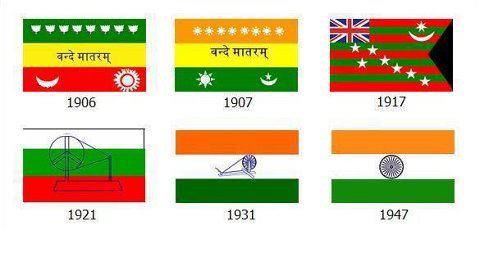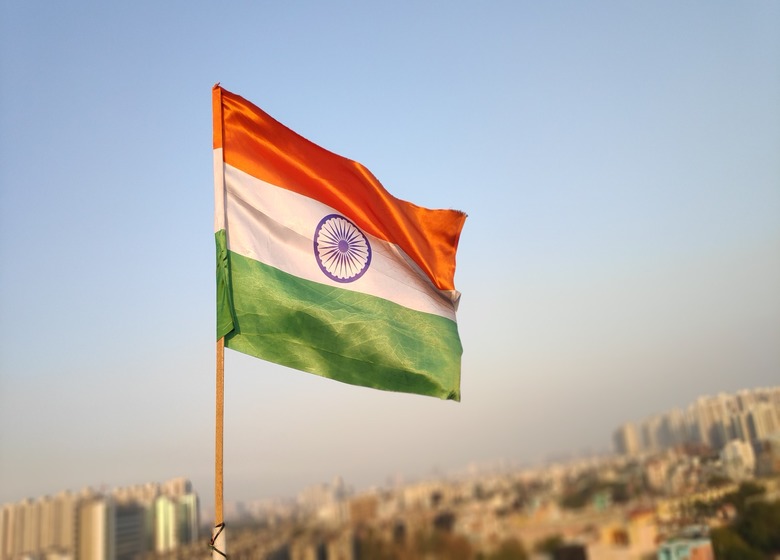Indian National Flag Facts For Kids
What makes it special is the unique colors, shapes, and symbols on a flag.
A national flag is a free country symbol. One such country is India, which has been struggling for its independence for over 200 years. If your child is interested in learning about the country flags around the world, read this post. Here you find interesting Indian national flag facts, including who designed the Indian flag and what the flag means for each color or symbol.
Keep reading to know about the Indian flag’s history and evolution over the years.
History Of Indian National Flag
At the Constituent Assembly meeting on July 22, 1947, the Indian National Flag was adopted in its present form. By then, the national flag’s design and colors had changed five times.
Evolution:
Indian Flag In 1906
On August 7, 1906, the first National Indian Flag was hoisted. It consisted of three green, yellow and red horizontal stripes. There were eight white lotuses in the green stripe, Vandemataram in the middle in the yellow segment, and a sun and a moon in the red stripe. It was hoisted at Kolkata’s Parsee Bagan Square.
Indian Flag In 1907
The second flag had stripes of orange, yellow and green, very comparable to the first flag. The top strip was orange, and the Saptarishi had seven stars. Madame Cama hoisted it in 1907 in Paris.
Indian Flag In 1917
In 1917, during the Home Rule movement, Dr. Annie Besant and Lokmanya Tilak hoisted the third version of the flag. Alternatively, this flag had four green and five horizontal red stripes. It also had seven stars in the setup of Saptarishi. The British flag or the Union Jack was at the top-left corner, and a black crescent moon with a star at the top was at the top-right corner.
Indian Flag In 1921
In 1921, during the All India Congress Committee meeting in Bezwada (present-day Vijayawada), a new flag was informally introduced. It had two colors: red and green, representing India’s two main groups: the Hindus and the Muslims. Mahatma Gandhi proposed that a white stripe be added to the design, representing India’s remaining groups. Also, to symbolize the nation’s advancement, a spinning wheel or’ charkha’ was introduced on the white strip.
Indian Flag In 1931
A resolution to embrace the tricolor as our National Flag was adopted in 1931, which was also the Indian National Army’s battle flag. The flag had each saffron stripe, white and green, with the spinning wheel of Mahatma Gandhi in the middle. The developers also explained that there was no communal meaning in the colors of the national flag.
Indian Flag In 1947
India’s current tricolor was accepted by the Constituent Assembly in 1947. The colors of the 1931 Flag and their significance remained the same after India became independent. But the spinning wheel was substituted with a flag symbol, Emperor Asoka’s Dharma Chakra.

Image Source – BING
Facts About Indian National Flag
1. Designer of the Indian National Flag:
Pingali Venkayya, who was part of India’s liberty movement, designed the Indian National Flag. He was born in a small town close Machilipatnam in Andhra Pradesh on August 2, 1876. He was an expert in geology and agriculture, and in his hometown, he also set up an educational institution.
2. Flag Proportion:
Indian national flag has three colours in equal proportion: profound saffron on the top, white in the center and dark green on the bottom and navy blue wheel on the white side of the flag. India’s national flags have a horizontal tri-colored width-to – the long ratio of 2:3.
3. Significance:
The flag’s saffron color signifies power and bravery, white symbolizes peace and truth, and Indian land’s green means growth, and fertility of the land.
4. Emblem of the Flag:
The wheel, also known as the ‘ Chakra, ‘ has 24 spokes. It portrays the “wheel of the legislation” as represented by the 3rd-century BC Mauryan Emperor Asoka in the Sarnath Lion Capital. The ‘ chakra ‘ aims to demonstrate that in stagnation there is life in motion and death.
5. Gandhi’s Flag:
Mahatma Gandhi stated in April 1921 that India had its own national flag in his journal Young India. He suggested a flag with the charkha in the middle.
6.The Swaraj Flag:
The British government placed a ban on the display of an Indian flag. This resulted in the freedom fighters to use a Swaraj flag as a symbol of protest. It was a tricolor in the middle with the charkha or spinning wheel.
7. Fabric of the Indian National Flag:
It is important to note that hoisting a flag made of any other material is punishable and can result in up to three years imprisonment together with a penalty. The National Flag of India must be made of hand-spun and woven wool, cotton or silk, and khadi bunting.
8. Indian national flag display protocols:
Following are the protocols that must be adhered to when the Indian National Flag is displayed.
The National Flag of India:
- Never touch the floor or water.
- Should never be used as clothing or drapery of any kind.
- Cannot be put upside down.
- Can’t be dipped to any person or anything.
- No objects can be held except flower petals, which is permitted before unfurling.
- Can’t use anything to inscribe.
- Must only be flown between sunrise and sunset.
9.The largest National Flag:
The largest National Flag is located at the border of Wagah-Attari, Amritsar, Punjab, on the highest pole at 360 feet. The flag is 110 meters long and 24 meters wide, and from Lahore, Pakistan, it is also visible.
Learning about the flag and its history, interesting and thought-provoking facts can make your child hungry for more information. They may also want to explore the country’s history, topography, and cultures. And if their interest is in flags, then who knows, the next vexillologist in the making is your child!
Also Read: Craft Ideas For Independence Day













